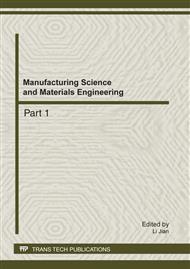p.484
p.488
p.495
p.501
p.507
p.513
p.518
p.523
p.528
Analysis on Dynamic Lubrication Characteristics of Gas Film in Hard Disk System
Abstract:
The dynamic response of the slider to external interference is analyzed through solving eqations simultaneously of the momentum equations and the time-dependent modified Reynolds equation based on the FK-Boltzmann modified model. Analysis software of autonomous copyright was produced, and the number of the copyright is 2009SR039126. Using this software, the dynamic response curves of the slder under different shocks were obtained, and the numerical results show that under an external motivation the significant vibration is produced. but the slider is capable of returning to the equilibrium position in 0.006ms. Then the lubrication function parameters are calculated, and variable rules of the values also were analyzed. The results shows the oscillation of slider in up-and-down direction have a larger effect on the film lubrication function, yet in the rolling direction the influence is the smallest. Consequently, the fluctuation in up-and-down direction is the main factor of affecting the dynamic lubrication function.
Info:
Periodical:
Pages:
507-512
Citation:
Online since:
January 2012
Authors:
Price:
Сopyright:
© 2012 Trans Tech Publications Ltd. All Rights Reserved
Share:
Citation:


